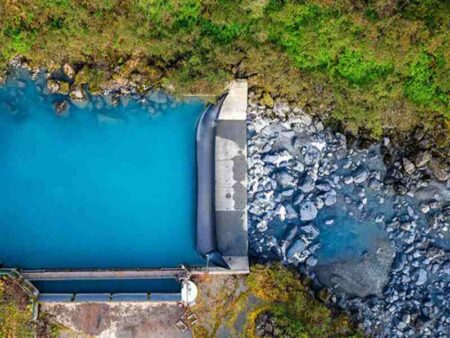
According to the National Renewable Energy Laboratory (NREL), despite assumptions from many of hydropower being “tapped out” as a source of investment opportunity, the clean power and storage source still has enormous growth potential, particularly for small- and medium-sized projects.
This is according to research findings from the US-based laboratory, published in their report, Hydropower Investment and Public-Private Ecosystem Assessment.
The lab says in a release that, ironically, hydropower’s reputation as a reliable source of energy and storage may be one of the reasons people often assume it is no longer a sufficient source of investment opportunities.
They add, however, that this is not the case; rather, the opposite is true.
According to NREL, hydropower provides 96% of utility-scale energy storage capacity in the US, with less than 3% of the more than 90,000 dams in the US now producing power.
This, in turn, marks thousands of nonpowered dams offering opportunities for investment.
In addition, dams that currently produce power can often be updated to increase capacity. There are also millions of miles of waterways, including both rivers and canals, that can be utilised for in-stream hydropower.
Have you read:
Power flows from hydro to beer in Nigerian energy trading project
DOE commits $750M to advance US hydrogen industry
Hydropower, states NREL, still has enormous potential for growth, including pumped storage hydropower (PSH), particularly for small- and medium-sized projects, or those that produce up to 30MW of power.
According to NREL’s report, which was funded by the US Department of Energy’s Water Power Technologies Office (WPTO), medium-sized projects offer significant opportunities for low-impact hydropower development.
The current medium-sized project pipeline, they add, includes projects that would constitute a total capacity of more than 1GW and involves capacity additions, nonpowered dam retrofits, hydropower generation in conduits, PSH, new stream-reach development and hybrid projects that combine multiple renewable technologies.
According to the report, new technology innovations and the variety of sites on which hydropower could be developed present potential opportunities for future investment, including:
- Modular conduit hydropower
In the last decade, states the report, developers have begun designing and deploying small modular conduit systems, which can be manufactured off-site and then assembled on-site.
This approach can decrease construction costs, reduce project timelines and increase flexibility to expand the size of a hydropower system in the future.
One example highlighted in the report of a company pursuing modular conduit hydropower is Emrgy, which raised several million dollars in private investment.
- Nonpowered dam resources
Because about 97% of US dams do not have power-generating infrastructure, nonpowered dams represent an attractive development opportunity with a potential capacity of 2GW or more within the medium-sized range.
- Hybrid plant configuration
Utilising hydropower in a hybrid configuration with other renewables and battery storage can unlock new revenue streams by providing power during peak demand or ancillary services such as the ability to adjust quickly to ensure grid reliability.
- Closed-loop PSH innovation
Closed-loop PSH systems feature two reservoirs that are not connected to a naturally flowing water feature like a river. These projects, which can offer siting flexibility, account for the majority of PSH projects in the pipeline. These projects would be the first closed-loop facilities in the United States.








